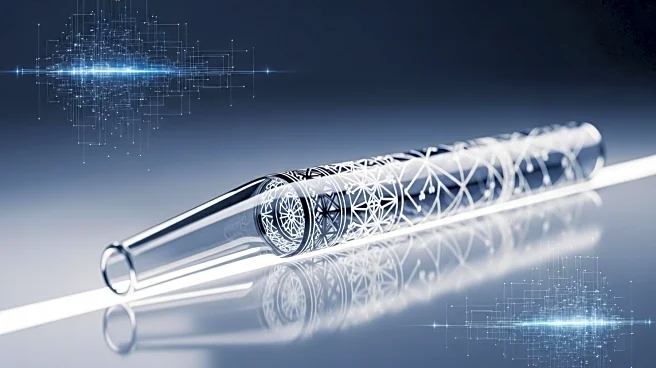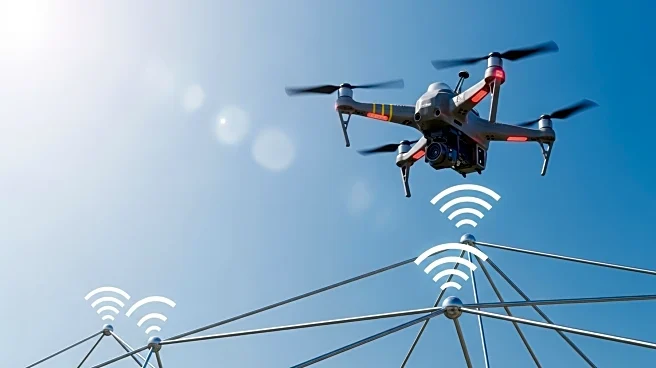What's Happening?
A new design for optical fibres, described in Nature Photonics, uses hollow 'glass straws' to transmit light through air rather than solid glass. This innovation aims to reduce signal loss and make long-distance data transmission more efficient and cost-effective. The fibres, developed by researchers at the University of Southampton, are produced by Lumenisity, a company acquired by Microsoft. The design allows light pulses to remain within the hollow central gap, potentially transforming telecommunications systems.
Why It's Important?
The development of hollow optical fibres represents a significant advancement in telecommunications technology. By reducing signal loss, these fibres can enhance data transmission speeds and efficiency, benefiting industries reliant on fast and reliable internet connections. This innovation could lead to more cost-effective infrastructure, supporting the expansion of high-speed internet access globally. The potential for faster data transmission may also drive advancements in sectors such as data centers and cloud computing.
What's Next?
If the new fibre design proves durable and can be manufactured and installed easily, it could lead to widespread adoption in telecommunications networks. This may result in faster internet services and improved connectivity, particularly in areas with high data transmission demands. The success of this technology could encourage further research and development in optical fibre innovations, potentially leading to new applications and market opportunities.












